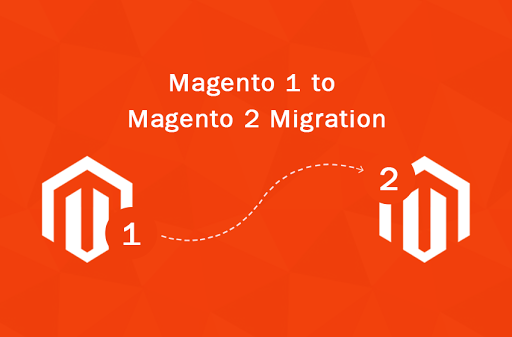Everything you Need to Know About Magento 1 to Magento 2 Migration

With Magento version 2.0 hanging around since a while now, the Magento e-commerce galaxy has seen tremendous innovations of late, with a shift of momentum towards v2.0 in place of Magento 1. To stay competitive in this world of formidable business competition, there’s a sense of urgency for stores to strategize their move to 2.0 rather sooner than later.
By now, everyone has their concepts clear as to why stores must migrate to Magento 2.0. However, most of these stores are still clueless about how they should phase out their move? If you’ve decided to call Magento v1.0 a quit, it can typically be overwhelming to understand where to begin and what to expect all through the migration process.
Fundamentals of Magento 2 Migration
A Magento 2 migration includes different components:
- Data (product and customer)
- Theme
- Extensions
- Custom Code
When you decide to upgrade your store to Magento 2, it’s essential that they hit the drawing board and come up with a detailed migration plan describing when and how certain specific actions will be implemented during the process. It always tends to be easy when you have the project divided into certain smaller milestones.
Here’s what a Magento 2 migration plan typically looks like, as illustrated by Magento in a handy flowchart:
For migration, Magento suggests planning the following basic steps:
View the current extensions in Magento 1 version and decide which are required in your new store. Find out if the current extensions are available from developers in Magento 2 version.
It is, also, high time for you to remove any unnecessary and redundant data from your Magento 1 store
Decide whether you require advanced high-end functionality in your Magento site or might require in the time ahead. Now is the perfect time to plan things effectively.
This step includes a couple of different components; that is, installing Magento version 2 and setting up the store with a design and topology like that of Magento 1 site.
Next, run your engines! You will need to stop all activities of your admin panel in Magento 1, save for order management functions. You’ll also need to stop cron jobs in Magento 1. It is recommended that you migrate data through a replicated Magento 1 database instance.
Once reindexing is complete, you will be required to methodically test the Magento 2 store to ensure there are no issues ahead of going live.
Next, you will be required to capture data updates like new orders, changes and reviews in user profiles, and move them to the Magento 2 site.
Bang on! You are all in readiness to go live. Please note that you’ll have to bear a store downtime for a little while (Magento claims it is only for a few minutes) for reindexing and modification of DNS settings ahead of going live. Hooray!
The process might, beyond doubt, not exactly as planned. Expect to run across a few issues that you’ll need to resolve. However, following the steps as detailed by Magento and considering the 4 pointers listed below can make your Magento 2 migration process simple and smooth.
5 points to consider when migrating to Magento version 2
Let’s face the truth: migrating to Magento 2 is, by no means, the easiest of processes. Magento 2 has a completely different database design and architecture.
Magento estimates that the migration is just 20% larger as compared to a Magento 1 upgrade. The amount of efforts and time required to migrate to Magento 2 varies depending upon the number of extensions running on the site, the number of customizations involved, and general complexity.
Magento has come up with a handy tool to help webmasters import customer and product data to the Magento 2 store. Click here to download Magento 2 data migration tool.
This tool makes use of map files for transferring data to your Magento 2 site. It verifies consistency between the database structures (tables and fields) of Magento 1 and 2, tracks the data migration status, creates log files, and executes data verification tests.
- Migrates configuration settings
- Migrates main data in the database
- Transfers incremental data updates to the admin panel and storefront
Magento developed the tool to assist customers in data migration process, so make the most of it.
Migrating media files like images should ideally be done separately from product data. Media files need to be moved manually.
This Magento guide explains how you can migrate media files stored in the file system and the database.
Magento 1 extensions are most probably not compatible with v2.0. This Code Migration Toolkit can help you migrate some custom code and extensions, but not all.
Both Magento 1 themes and extensions need to be re-created to work effectively with the 2.0 Magento structure. You may contact the product developer to access a new version of Magento extensions and themes.
There are odds that the migration process may not work perfectly, despite proper planning and implementation. Expect running into some weird error messages. Though, you need not panic. The migration process doesn’t always run smooth and getting a few errors is expected; just reach out to a specialized Magento developer to fix things up.
The bottom line:
Making a move to Magento 2 is important if you intend to stay abreast of latest innovations in the ecommerce fraternity. While it can be quite a monotonous process, proper planning and precise execution, as a thumb rule, can ease it out.
Finoit Technologies is a renowned mobile app development company providing custom software development services and IOT application development services. We have developed over 450 mobile apps, and have assisted many solopreneurs in their journey of startups by functioning as a tech partner and rolling out their product ideas. For questions/queries, you may write to us at info@finoit.com
